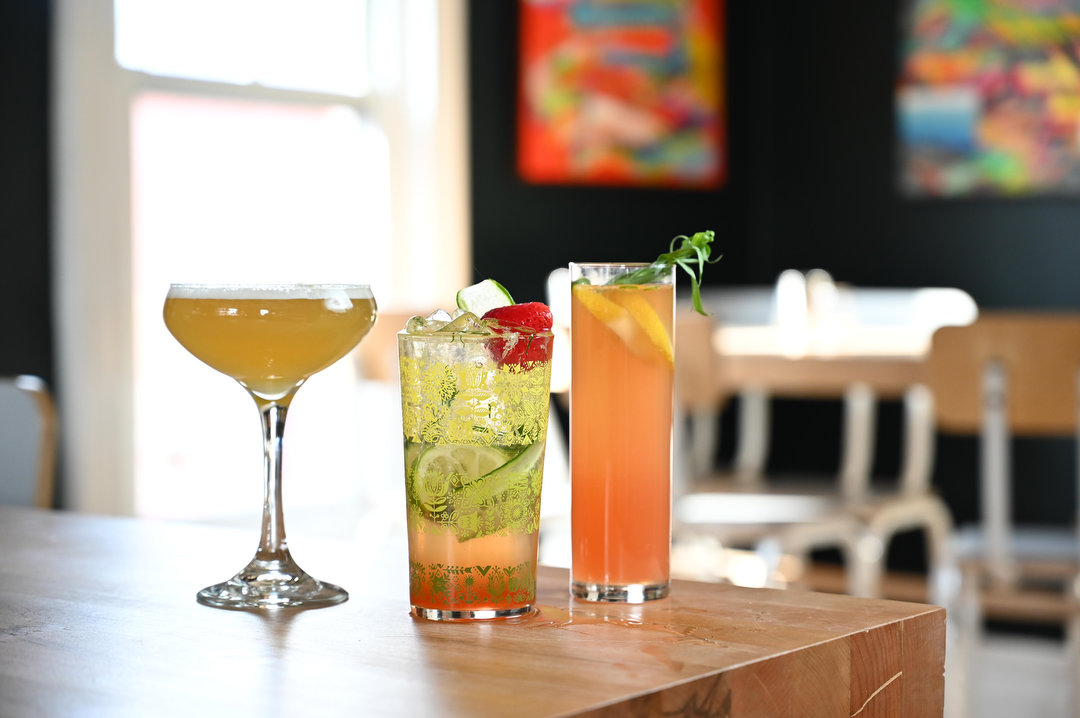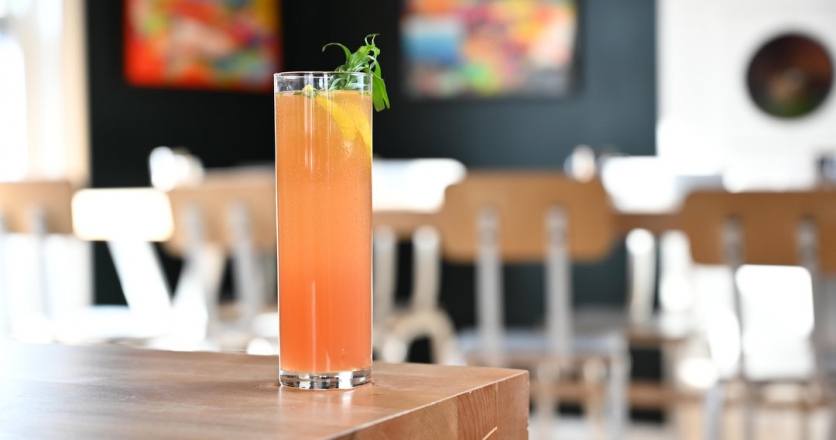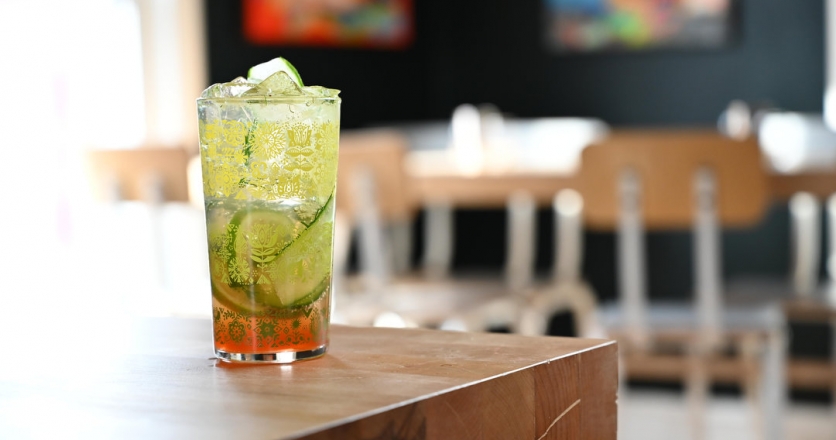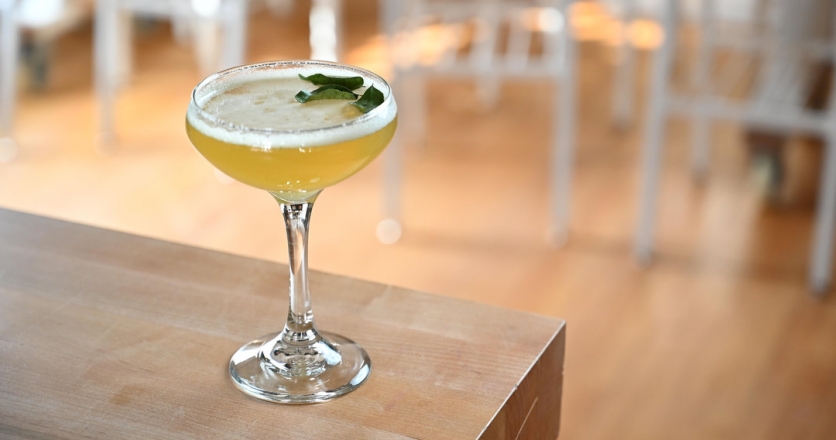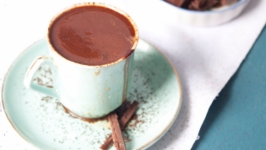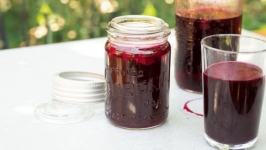Tenets of Temperance
Bartenders look to historical drinks for inspiration, building upon them, tweaking, adjusting and reimagining them in order to create something new out of the already-established. Proxies, mocktails of yesteryear or even temperance drinks from pre-prohibition times all refer to the same thing: non-alcoholic (NA) drinks. NA drinks have always been around, despite their harder counterparts taking centre stage, though this is changing: NA options are becoming more readily available and are exciting bartenders (home and pro alike). Kombucha, seltzers and craft soft drinks have been gaining steam and are a great ready-to-drink option.
Creating NA cocktails is always a great challenge that requires flexing those creative muscles. The main difficulty is to create something that has the depth and complexity akin to a boozy beverage; alcohol itself lends a weighty fiery component that is hard to imitate. NA spirits aim to bridge the realm of cocktailing and NA drinks by creating proxies meant as spirit substitutes. England’s Seedlip has been the forerunner of the category, creating enticing herbal alternatives while Vancouver Island’s Lumette, non-alcoholic distilled spirits, comes in a London Dry style gin and Bright Light with notes of juniper, citrus, rose, cucumber and mint. These are fun and exciting components to play around with, but there’s a world of flavour out there that can be made into delicious and exciting drinks at home.
Based on my experience designing cocktail menus, and more recently, teaching online NA cocktail classes, I’ve put together a short list of my main discoveries and tenets for creating great, at-home non-alcoholic drinks. Practice is key, as is experimentation. The latter may yield varying results, but it’s the best way to learn about flavours and how they interact.
Lastly: drinks require balance. Some skew more towards sweetness or acidity, sure, but never do you want anything so out of whack that it’s unpleasant. Lemonade without enough sugar is closer to a salad dressing than a drink. Too much sugar and you lose any semblance of refreshment.
Acidity
Acid lets a drink sing. It can brighten and liven up a drink, increasing its quaffability and enjoyment. Standard go-tos are citrus of course, but feel free to try things such as vinegar and verjus for some added depth. Verjus is unfermented wine grape juice — wine grapes have a higher acid-to-sugar ratio than your grocery store grapes and are able to provide plenty of character and acidity into your drinks.
Balsamic vinegar is a great option for something sweet and sour, especially delving into the world of fruited balsamics, such as those carried by Di Oliva and Coastal Olive Oils Co., but even a splash of apple cider vinegar can create some really interesting flavours when used sparingly, often mimicking that alcohol burn on the back end.
Sweetness
Sweetness is easy to overdo, though it’s still an integral component. Without an element of sugar, drinks will be austere, thin and ultimately not that pleasant. Simple syrup couldn’t be an easier base: equal parts sugar and water, heated until the sugar is dissolved. I’ve found doing small batches in the microwave à la minute to be the quickest way to tackle enough for up to three drinks.
The secret is this: don’t stop at sugar and water. Any liquid and any form of sugar can be used, creating infinite and wholly curated flavour profiles to work with whatever drink you make. Think of it as a new angle from which to approach your drink, all in the name of building complexity.
Funk and depth
This is the fun one. This is the area in which you truly get to be creative, and can highlight a drink’s central flavours. Herbs and vegetables are a good starting point as they’re able to provide a savoury, umami earthy component. Pair vegetables with spices that often work together: carrots and cumin for example. Cucumber will provide a refreshing note while celery can provide a subtle bitterness. Bitterness is also a sought-after component that you can seek out through oversteeped teas or coffee; this will give a bit of a drying texture, which will make you want to reach for another sip.
Bubbles
When in doubt, add bubbles. Turning a classic cocktail into a virgin one by simply removing the booze will leave you with a scant, unbalanced potion of syrups and acids. Lengthening NA drinks with seltzer, soda or kombucha provides lift and a vibrant element. Keep in mind that a soda will have more sugar and kombucha will be a touch more acidic, as these will affect the final balancing act.
Mi-no-sa
The combination of tarragon and grapefruit is great: the herb’s light anise-like notes play beautifully off the bittersweet grapefruit. The green-tea syrup adds an element of tannic tea and herbal earthiness that creates some depth. Preserved lemon brine adds a subtle salty- sour funk. A little goes a long way, but makes a world of difference. Most specialty grocers carry preserved lemons; the brine is great in drinks and dressings while the lemons themselves are fantastic in roast chicken. Topping with kombucha really ties the elements of the brine’s funkiness with the green tea and tarragon-grapefruit combo.
1 slice of fresh lemon
2 sprigs of tarragon
60 ml grapefruit juice
30 ml green tea syrup (recipe below)
5 ml preserved lemon brine
Top with kombucha
In a shaker, muddle one tarragon sprig with the lemon wheel. Add all ingredients except the kombucha. Shake with ice and strain into a flute. Top with kombucha. Garnish with a tarragon sprig.
Green tea syrup: In a saucepan on the stovetop, heat ½ cup sugar and ½ cup water at medium heat until the sugar is dissolved. Remove from heat and add one green teabag. Let cool and strain.
Wimbledon breakfast
This one builds fresh flavours upon fresh flavours. Any two ingredients in this drink would make for a delicious sipper, but layering the vegetal notes atop one another introduces gin-like characteristics. Add bubbles and the drink starts to approach the classic flavours of a G&T. The strawberry syrup adds a complementary, sweet and rounding note to provide a little more chutzpah.
1 wheel-shaped cucumber slice
1 wheel-shaped lime slice
1 pinch fresh dill
15 mL strawberry syrup (recipe below)
Top with seltzer
Muddle the cucumber, lime and dill in the bottom of a tall glass. Add the syrup, ice and top with the seltzer. Garnish with a cucumber rib- bon and dill frond. Tip: for best results, wrap the inside of the glass with the cucumber ribbon before adding ice and seltzer.
Strawberry syrup: Heat ½ cup sugar, ½ cup chopped fresh strawber- ries and ½ cup water at medium heat until the sugar dissolves. Let cool and strain.
Beachcomber
Curry leaves are not to e confused with curry powder. These leaves are super fragrant and the best way I can describe their flavour is something of a cross between cucumber skins and peanuts. Delicious. Amping that vegetal note with cilantro creates a really nice base for pineapple and coconut. Consider adding Alfoos Mango White Balsamic Vinegar from Di Oliva or a coconut balsamic from Coastal Olive Oils Co. to tie up the whole tropical, savoury and bright flavour combination quite nicely.
7 curry leaves
Small handful of cilantro
60 mL pineapple juice
22 mL coconut syrup (recipe below)
15 mL white balsamic
Top with kombucha
In a shaker, muddle 5 curry leaves and cilantro. Add all the ingredients except the kombucha. Shake with ice and strain into a coupe. Top with kombucha. Garnish with curry leaves.
Coconut syrup: In a saucepan on the stovetop, heat ½ cup sugar and ½ cup water until the sugar dissolves. Remove from heat and add one tablespoon of shredded, unsweetened coconut. Let cool and strain.


